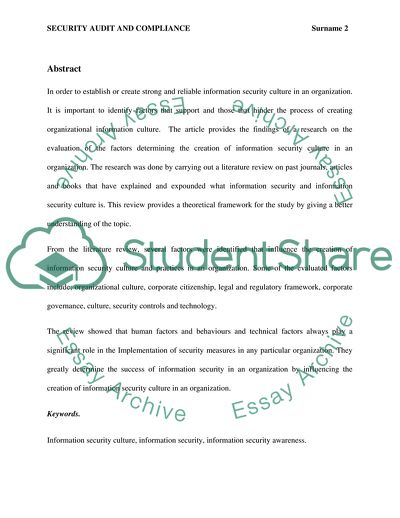Cite this document
(Security Audit and Compliance Article Example | Topics and Well Written Essays - 2750 words, n.d.)
Security Audit and Compliance Article Example | Topics and Well Written Essays - 2750 words. https://studentshare.org/information-technology/1848799-security-audit-and-complaince
Security Audit and Compliance Article Example | Topics and Well Written Essays - 2750 words. https://studentshare.org/information-technology/1848799-security-audit-and-complaince
(Security Audit and Compliance Article Example | Topics and Well Written Essays - 2750 Words)
Security Audit and Compliance Article Example | Topics and Well Written Essays - 2750 Words. https://studentshare.org/information-technology/1848799-security-audit-and-complaince.
Security Audit and Compliance Article Example | Topics and Well Written Essays - 2750 Words. https://studentshare.org/information-technology/1848799-security-audit-and-complaince.
“Security Audit and Compliance Article Example | Topics and Well Written Essays - 2750 Words”. https://studentshare.org/information-technology/1848799-security-audit-and-complaince.


